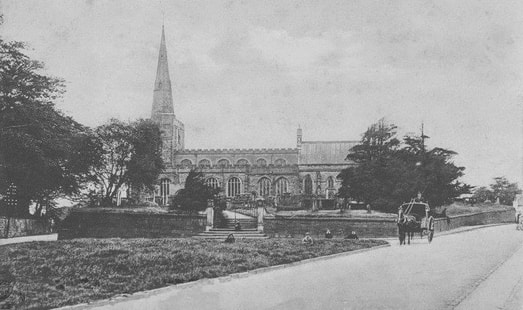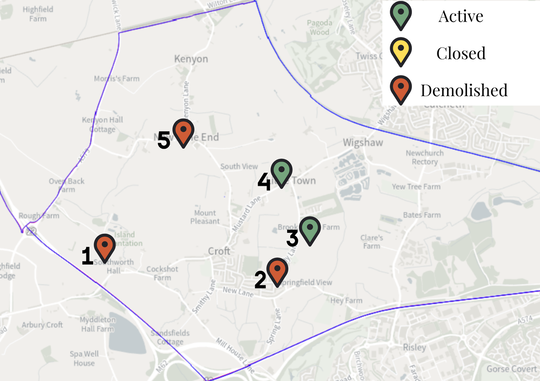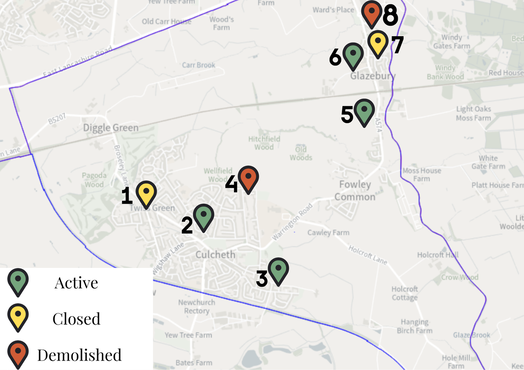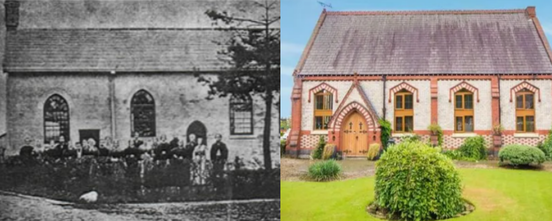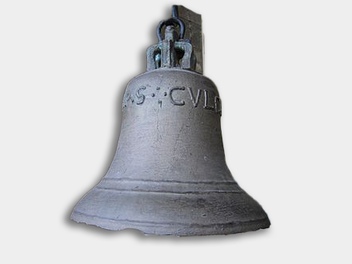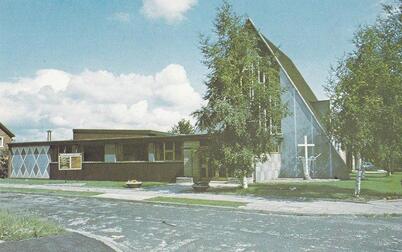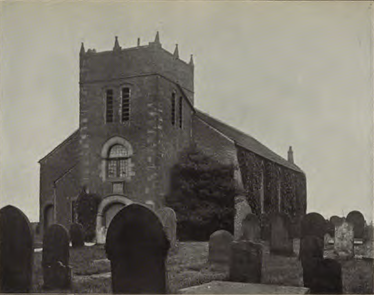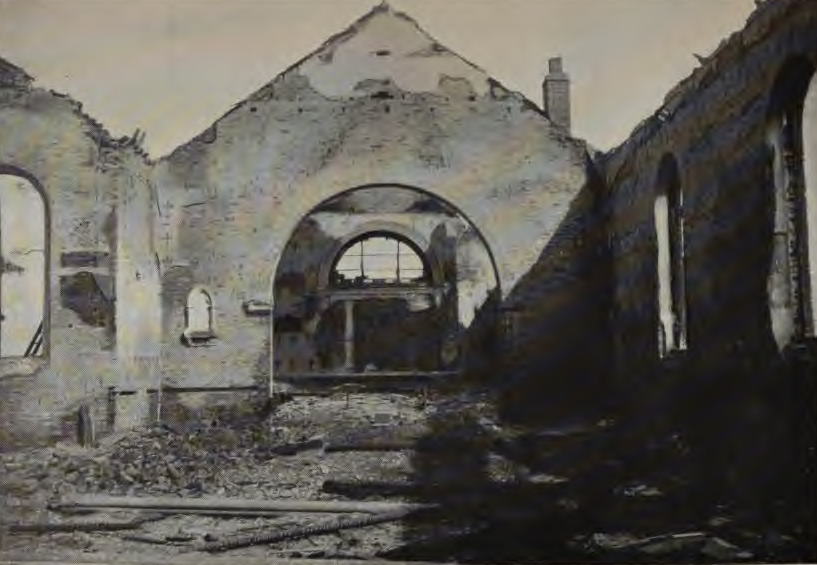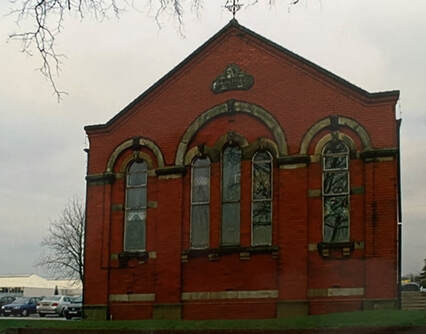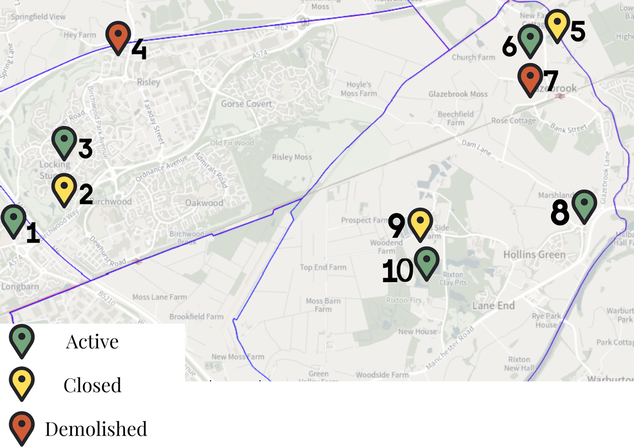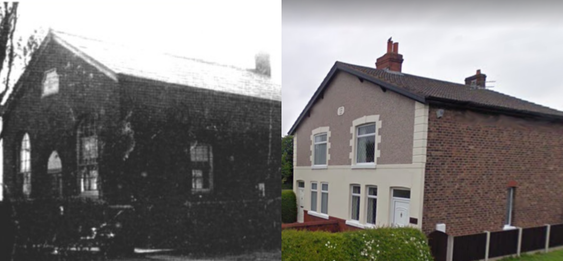St. Oswald's Church in Winwick
St. Oswald’s Church at Winwick dates back to Saxon times, though the building itself has been updated and partially rebuilt many times over the years. It was the main Parish Church for many locals, including those in Croft until Christ Church was built in 1833.
Croft Places of Worship
1 - Southworth Hall Roman Catholic Chapel
Active 1292 - 1827
2 - Croft Unitarian Chapel
Active 1839 - 1965
3 - Christ Church Parish Church
1833 - present
4 - St. Lewis Roman Catholic Church
1827 - present
5 - Croft Methodist Chapel
Active 1817 - 1845
1 - Southworth Hall Roman Catholic Chapel. The hall had it's own chapel which was in use until 1827 when St. Lewis Church was built in Croft.
2 - Croft Unitarian Chapel was built in 1839 after the congregation was ejected from Risley Chapel. It was demolished around 1965.
2 - Croft Unitarian Chapel was built in 1839 after the congregation was ejected from Risley Chapel. It was demolished around 1965.
3 - Christ Church Parish Church - Built in 1833 and is still active.
4 - St. Lewis Roman Catholic Church - Built in 1827 and still active today. It is a Grade II listed building.
5 - Croft Methodist Chapel was constructed on Heath Lane in 1817. The building was taken over in 1837 and became Croft Wesleyan Chapel. It is unclear exactly how many years this remained open, but it was certainly unused by 1845, as it was taken apart and the materials used to build Culcheth Independent Methodist Chapel at Twiss Green.
5 - Croft Methodist Chapel was constructed on Heath Lane in 1817. The building was taken over in 1837 and became Croft Wesleyan Chapel. It is unclear exactly how many years this remained open, but it was certainly unused by 1845, as it was taken apart and the materials used to build Culcheth Independent Methodist Chapel at Twiss Green.
Culcheth and Glazebury Places of Worship
1 - Culcheth Independent Methodist Chapel
Active 1845 - 2003
2 - Culcheth Methodist Church
1966 - present
3 - Newchurch Parish Church
1530 - present
4 - Culcheth Hall Roman Catholic Chapel
Active 1201 - 1825
5 - Glazebury Methodist Church
1865 - present
6 - All Saints Church
1851 - present
7 - Glazebury Primitive Methodist Church
Active 1837 - 1878
8 - Glazebury Primitive Methodist Church
Active 1878 - 1967
1 - Culcheth Independent Methodist Chapel was built from the remains of Croft Methodist Chapel in 1845.
Here is an extract from ‘A Short History of Independent Methodism’ published in 1905:
‘James Wood, a tenant of an old farm near Kenyon Hall, allowed his kitchen to be used for worship by a group of his peers. His co-workers included Timothy Leather, John Fearnhead, Richard hunt, John Goulden and John Massey, among others. Public worship was continued in the kitchen until 1845, when a chapel at Croft, which was disused, was taken down and removed to a site given by Richard Hunt. This, after a few years, had an extension of 13 feet. In 1884, the old walls were encased with new brickwork, the chapel repaired, and additions made at a cost of £600. In September 1900, further alterations and additions were made, and an organ, the gift of John Hunt, placed in the enlarged organ chamber.’
The congregation changed its name to Culcheth Christian Fellowship in around 1995. The building was converted into living accommodation and sold in 2003. A new church was built in the same year on Hob Hey Lane.
Here is an extract from ‘A Short History of Independent Methodism’ published in 1905:
‘James Wood, a tenant of an old farm near Kenyon Hall, allowed his kitchen to be used for worship by a group of his peers. His co-workers included Timothy Leather, John Fearnhead, Richard hunt, John Goulden and John Massey, among others. Public worship was continued in the kitchen until 1845, when a chapel at Croft, which was disused, was taken down and removed to a site given by Richard Hunt. This, after a few years, had an extension of 13 feet. In 1884, the old walls were encased with new brickwork, the chapel repaired, and additions made at a cost of £600. In September 1900, further alterations and additions were made, and an organ, the gift of John Hunt, placed in the enlarged organ chamber.’
The congregation changed its name to Culcheth Christian Fellowship in around 1995. The building was converted into living accommodation and sold in 2003. A new church was built in the same year on Hob Hey Lane.
2 - Culcheth Methodist Church - the first modern church since the English reformation in Culcheth opened in 1966 and is now the largest Methodist church in the local area. It is now home to the old bell from Culcheth Hall chapel, the squire's private Catholic chapel, which has passed through the other churches to Culcheth Methodist Church for safekeeping.
The bell is no longer hung in the church, due to the inability of the Methodist Organisation to accept risk of it falling or hurting someone if they bumped into it. The church is part of the Leigh and Hindley Circuit
3 - Newchurch Parish Church was originally constructed around 1530. It was rebuilt on the same site in 1753. The whole church apart from the tower was burnt to the ground in 1903. The Church was again rebuilt in 1904 and is still active today.
4 - Culcheth Hall Roman Catholic Chapel. Culcheth Hall had it's own chapel and catholics worshipped there until the last mass was said on 8 May 1825. The congregation then worshipped at Southworth Hall until 1827 when St. Lewis Church was built in Croft.
5 - Glazebury Methodist Church was built in 1865 on Warrington Road. It amalgamated with Glazebury Primitive Methodist Church in 1967 and is still active. It was also known as St. John’s Methodist church.
6 - All Saints Church was built in 1851. It is still active and is a Grade II listed building.
7 - Glazebury Primitive Methodist Church was built in 1837 on Warrington Road and after 1878 was converted into house numbers 477 - 481.
8 - Glazebury Primitive Methodist Church moved here in 1878. Four years later a Sunday School was added. On 8th December 1892 it was registered for solemnizing marriages. It closed in 1967 and the building was demolished around 2014.
5 - Glazebury Methodist Church was built in 1865 on Warrington Road. It amalgamated with Glazebury Primitive Methodist Church in 1967 and is still active. It was also known as St. John’s Methodist church.
6 - All Saints Church was built in 1851. It is still active and is a Grade II listed building.
7 - Glazebury Primitive Methodist Church was built in 1837 on Warrington Road and after 1878 was converted into house numbers 477 - 481.
8 - Glazebury Primitive Methodist Church moved here in 1878. Four years later a Sunday School was added. On 8th December 1892 it was registered for solemnizing marriages. It closed in 1967 and the building was demolished around 2014.
Other Local Places of Worship
1 - Risley Independent Methodist Church
1910 - present
2 - Risley Primitive Methodist Church
Active 1848 - 1910
3 - Thomas Risley Church
1979 - present
4 - Risley Chapel
Active 1707 - 1971
5 - Glazebrook Temple United Methodist Free Chapel
Active 1877 - 1973
6 - Glazebrook Methodist Church
1908 - present
7 - Glazebrook Primitive Methodist Chapel
Active 1808 - 1907
8 - Church of St. Helen
1497 - present
9 - St. Michael's Roman Catholic Church
Active 1831 - 1975
10 - Rixton Methodist Church
1843 - present
1910 - present
2 - Risley Primitive Methodist Church
Active 1848 - 1910
3 - Thomas Risley Church
1979 - present
4 - Risley Chapel
Active 1707 - 1971
5 - Glazebrook Temple United Methodist Free Chapel
Active 1877 - 1973
6 - Glazebrook Methodist Church
1908 - present
7 - Glazebrook Primitive Methodist Chapel
Active 1808 - 1907
8 - Church of St. Helen
1497 - present
9 - St. Michael's Roman Catholic Church
Active 1831 - 1975
10 - Rixton Methodist Church
1843 - present
1 and 2 - Risley Primitive Methodist Church (also known as Risley Prosperity Chapel) was built in 1848 on Longcut Lane. The original building was extended in 1869, a year before their transition to Independent Methodism. From 1870 it was known as Risley Independent Methodist Church. The congregation built a new church in 1910 on Fearnhead Lane, which they still worship from today. The original building on Longcut Lane still remains, having been converted to living accommodation.
3 and 4 - Risley Chapel was built by Thomas Risley in 1707 after preaching in Richard Jackson’s barn since 1689. In 1839, the Unitarians were ejected from the chapel, and it was taken over by the Presbyterians as Risley Presbyterian Chapel. The building was demolished in 1971 and another one erected in Locking Stumps. The Thomas Risley Church opened in 1979 and was extended in November 2000. It is still active today as part of The United Reformed Church.
5 - Glazebrook Temple United Methodist Free Chapel was built in 1877 on Glazebrook Lane. It closed around 1973. The building still stands and has been converted into flats.
6 - Glazebrook Methodist Church was built in 1908 on Glazebrook Lane and is still active.
7 - Glazebrook Primitive Methodist Chapel was built in 1808 on Dam Head Lane. It Closed around 1907.
8 - The Church of Saint Helen was built in 1497 and rebuilt in 1735. It was constituted Parish Church of Hollinfare on 17th March 1874. The building was restored in 1882. A major refurbishment took place in the 1980’s, including a new slate roof. Further works have been carried out more recently. The church is still active.
9 - St. Michael's Roman Catholic Church was built in 1831 on Moss Side Lane, Rixton. It closed in 1975 when the congregation moved to St. Peter's in Woolston.
10 - Rixton Methodist Church was built in 1843 on Chapel Lane in Rixton. The building was replaced in 1904 and the church is still active.

